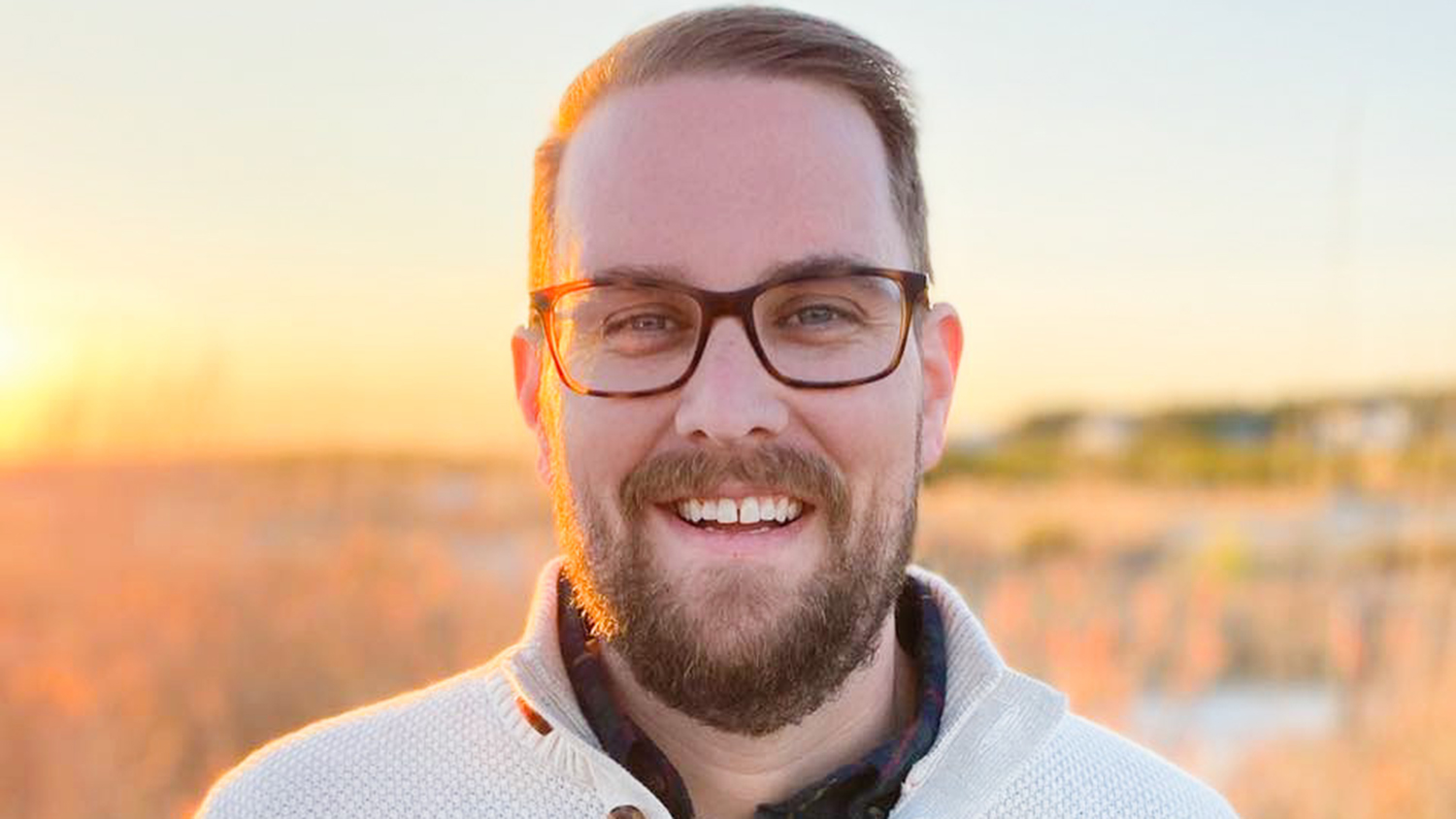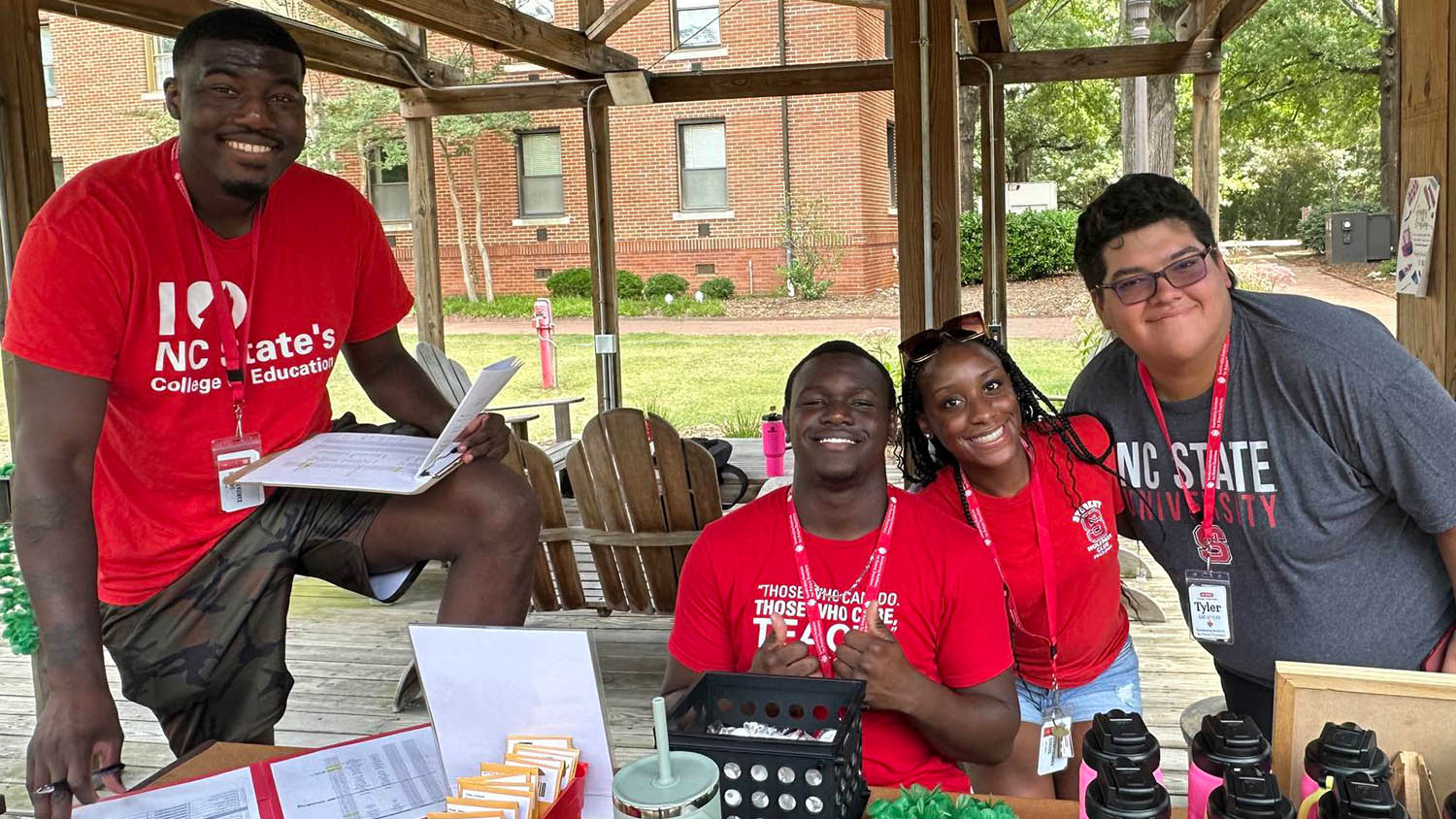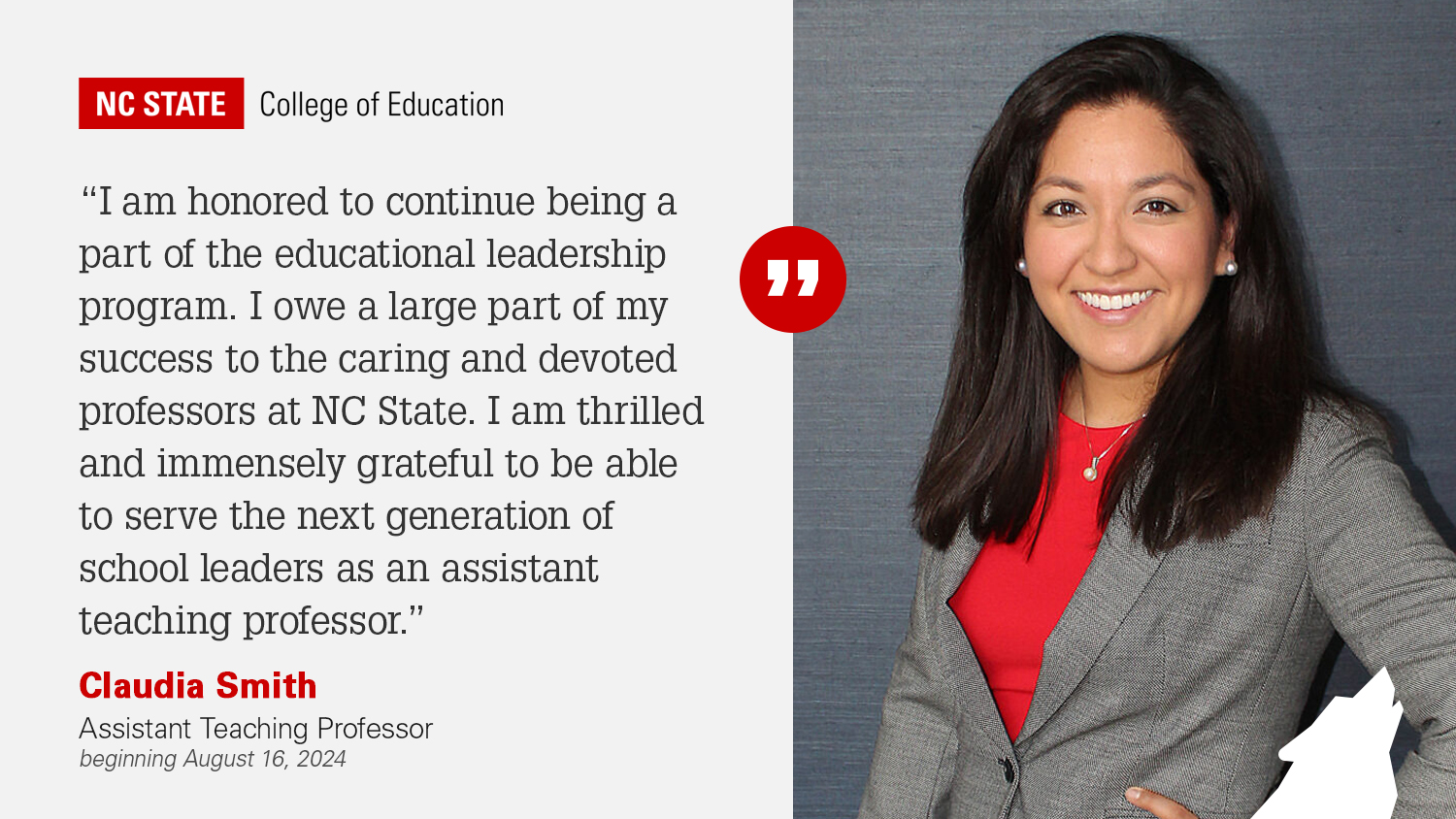Undergraduate Students Receive Certification in Use of Digital Classroom Tools, Develop Greater Understanding of Classroom Technology with Help of Assistant Teaching Professor Matt Reynolds

As a former high school science teacher and current assistant teaching professor of STEM education at the NC State College of Education, Matt Reynolds, Ph.D., has taught his share of lessons about lab safety. However, he faced a new challenge during the fall 2020 semester when he had to teach lab safety without actually having access to a physical lab.
Because of the move to remote learning to help mitigate the spread of the coronavirus, undergraduate students in Reynolds’ EMS 373: Instructional Materials in Science course had to complete their lab safety lessons in a completely virtual environment. He managed the lesson by sharing a series of lab incidents — both hypothetical and ones he’s experienced in the classroom — and asking students how they would respond and what they should have done to prevent it.
This increasing need to adapt instruction to an online learning environment is one of the reasons Reynolds wanted to make sure that the students in his course were prepared with the tools they’ll need to be successful teachers, no matter what instruction looks like when they enter the classroom. For that reason, all juniors and seniors who took EMS 373 have now become Google Level 1 Certified Educators.
To become certified, students completed a series of modules focused on different elements of the Google Suite that might be valuable for educators, including Google Docs, Google Classroom and Google Slides. They then completed a test in which they demonstrated proficiency in these apps and earned a certification that will remain valid for three years.
“Twenty-first century teaching requires this. You need to have these skills and, particularly with the pandemic, I immediately saw from my friends who are teachers that transitioned to online teaching, if you were not an expert already in these digital tools, you were forced to become one very quickly,” Reynolds said.
In addition to teaching students the basic functions of applications within the Google Suite, the certification process also teaches them how to use functionality within the apps for specific educational applications. For example, students learned how to turn a simple Google Form into a quiz that can be easily graded and how to use Google Sheets to calculate average grades and share results with their principals.
Students who completed the certification process received a numbered certificate as well as an icon that can be added to their resumes and their email signature line, Reynolds said.
“At the end of my emails now, I have Google Level 1 Certified Educator,” said science education major Ally Gagnon ‘22. “You can put this certification on your resume, but if you have it in your email and you’re reaching out to whoever you might be interviewing with, they’ll see it and hopefully think, ‘wow, this person really knows her stuff.’”
In addition to helping students become Google Level 1 Certified Educators, Reynolds has spent a lot of time this semester making sure students are prepared to teach in a digital format, whether that be through online-only classrooms or through the use of flipped classrooms once in-person learning resumes.
One of the most common problems in science education, Reynolds said, is that classroom teachers don’t always have as much time as they’d like to explain lab activities, engage in the lab and then follow up with students to address questions. To solve this issue, he is helping students use the flipped classroom model to provide background information about lessons in a digital format that can be assigned as homework, while then devoting more classroom time to lab activities and discussion.
To practice this concept, each student had to prepare a 25-minute asynchronous lesson for their classmates to complete as well as a 25-minute synchronous microteaching lesson that they led during scheduled class time.
Science education major Elizabeth Cohen ‘22 developed her lessons around the use of DNA technology with background information provided asynchronously followed by a synchronous lesson in which the class worked together to use DNA evidence to solve a fictional mystery about which of a family’s dogs rummaged through the kitchen.
“Since this semester is all virtual, Dr. Reynolds is tailoring the lessons as if we were teaching virtually, so it’s nice to see the different things we can do with our classrooms,” she said. “As a student, it can get really boring if you’re just listening to someone lecture. He’s given us ways to engage the students.”
Students said that Reynolds has helped them to move from using what he calls “cookie cutter labs” — where students follow specific directions to get to a specific result — to inquiry-based labs in which students form their own hypothesis. In addition, he has shared stories of bringing game-based activities into the classroom and introduced students to virtual tools that can enhance their teaching.
One of Gagnon’s favorite assignments was planning a lesson around the use of Google Expeditions, which allows students to use an app on their phone to virtually visit a variety of places in the world in conjunction with a teacher-guided lesson.
“I’d never used virtual reality before, especially for teaching applications, and I thought it was a really cool way to engage students in what else is out there,” she said. “I personally haven’t been out of the country, and I know a lot of high school students probably haven’t either, so to immerse them in that and then relate it back to different lesson plans and learning objectives was really cool to me.”
Reynolds said he has placed an increased focus this year on digital tools that can not only enrich the class environment but also give students an opportunity to better understand science content. For example, he encouraged his students to use virtual microscope simulations in their future classrooms to give secondary students an opportunity to learn how to use them without accidentally causing damage to expensive instruments. In addition, the use of the tools allows students to see a digital representation of what they are supposed to be looking for on the slide when they use the real microscope.
He has also incorporated new digital tools into his own teaching, using programs like Pear Deck to allow students to respond and interact during Google Slides presentations. The program allows Reynolds to see student responses as well as partial responses, so he can recognize thought processes and common misconceptions behind student questions. In addition, because comments left through Pear Deck are not attached to a student’s name like messages in a Zoom chat would be, Reynolds said students sometimes feel more confident in attempting to answer questions.
“When he uses Pear Deck, I find it really helpful and it helps me to stay focused and engaged,” Cohen said. “In my microteaching lesson, I used Pear Deck so the students can follow along, ask questions, answer questions and interact. Even if they’re not necessarily talking, I know they’re engaged and following the lesson.”
Reynolds realizes that while making sure his students are prepared with the knowledge and tools to be successful teachers is important, making sure that they are all coping well under the current circumstances is even more so.
He begins each class with a social-emotional check-in for students that gives them options ranging from “I’m doing great and happy to be here” to “It’s been difficult, and I may struggle with focusing.” These check-ins are important, he said, because it’s more difficult to gauge students’ emotion in a virtual environment.
“This is a place where they can share privately with me if there’s anything I can help them with,” he said. “In education, particularly in science education, there’s nothing ‘distanced’ about it. It’s supposed to be interpersonal and good science instruction is very hands-on, so it might be awhile before we get that back.”
- Categories:


